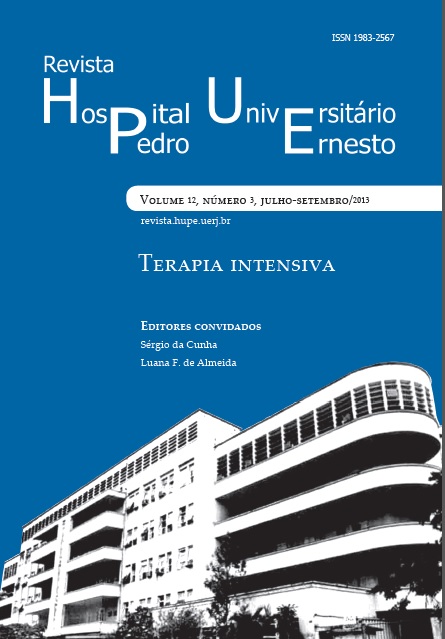Emergências hipertensivas
DOI:
https://doi.org/10.12957/rhupe.2013.7532Περίληψη
A elevação da pressão arterial é frequente noambiente de terapia intensiva, podendo ser omotivo da admissão de determinados pacientesou se desenvolver em pacientes que já se encontraminternados. Pode se manifestar como umaemergência, requerendo pronta-redução dosníveis pressóricos com agentes intravenosos, oucomo uma urgência, na qual o controle pressóricopode ser feito de forma mais gradual comagentes orais. O fato que diferencia essas duassituações é a presença de lesões de órgãos-alvo, encontradas nas emergências hipertensivas,levando à manifestações principalmente neurológicas(encefalopatia hipertensiva, acidentevascular cerebral isquêmico ou hemorragiaintracerebral), hematológicas (hemólise microangiopática), cardiovasculares (insuficiênciaventricular esquerda aguda, isquemia e infartomiocárdicos e dissecção aórtica), ou renais (oligúria,azotemia). As emergências hipertensivaspodem também surgir em pós-operatório ouestar associadas à elevação de catecolaminas eeclampsia. A abordagem inicial do paciente inclui aanamnese e exame físico, em busca de informações,como presença de hipertensão arterialprévia, presença de outras comorbidades e manifestaçõesrelacionadas a lesões de órgãos‑alvo.Exames complementares, laboratoriais e deimagem também são necessários, em buscadessas lesões. Devido à morbidade e mortalidade associadaa estas situações, a pressão arterial deve serrapidamente controlada com agentes endovenosos. A terapia inicial tem o objetivo de revertera lesão de órgãos-alvo e não retornar a pressãoarterial ao normal. Posteriormente podem serintroduzidos agentes orais. A escolha e os objetivos do tratamento sãobaseados em consensos e devem ser guiados pelaetiologia da hipertensão, extensão das lesões deórgãos-alvo e perfil hemodinâmico individualdo paciente.
Revista HUPE, Rio de Janeiro, 2013;12(3):66-77
doi:10.12957/rhupe.2013.7532


